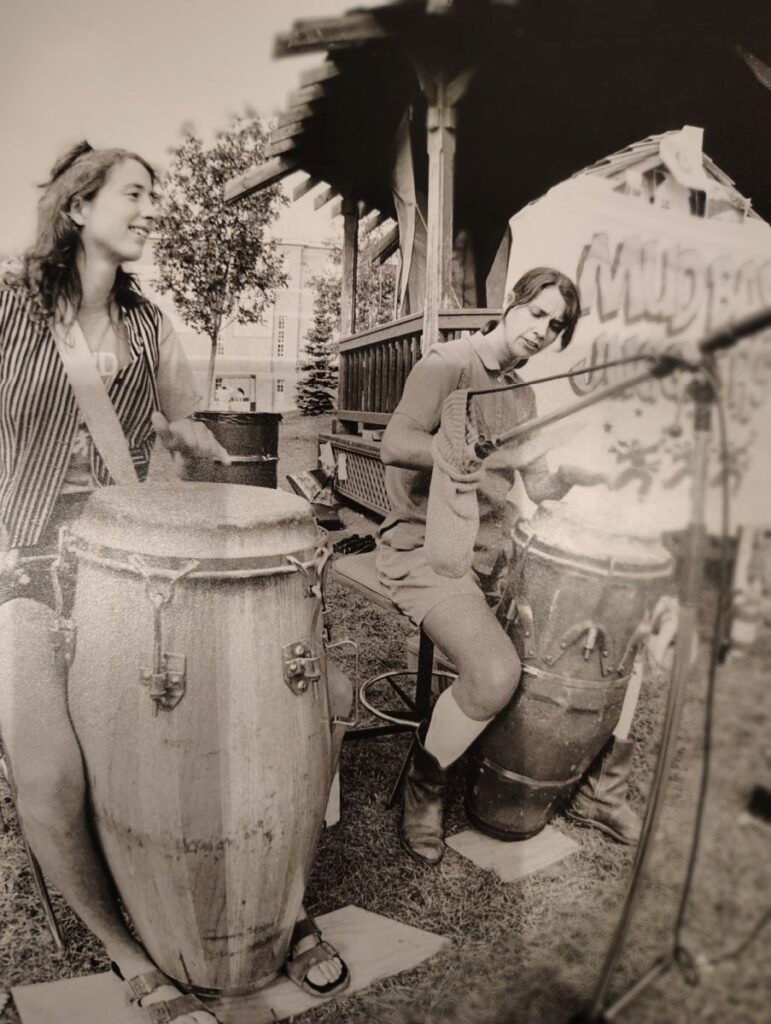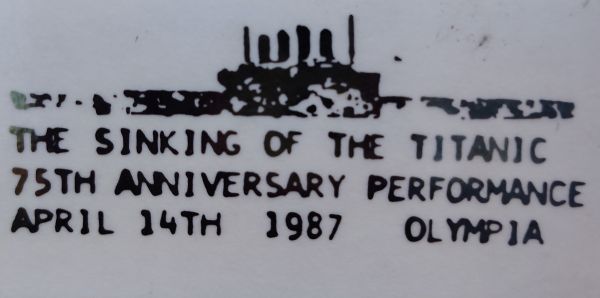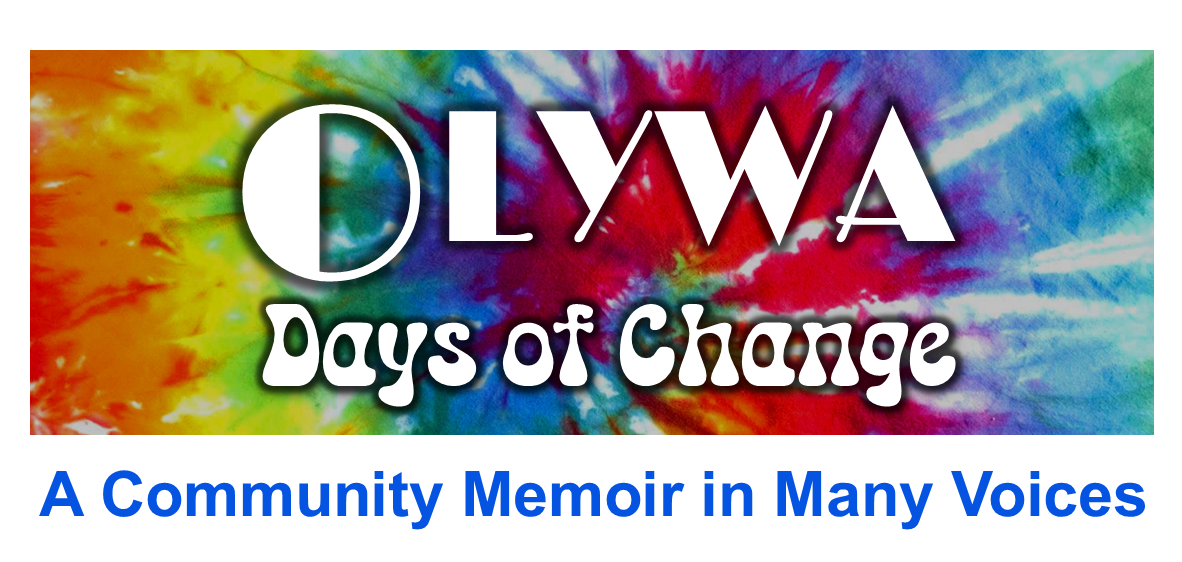ARTS
A Fantastic Odyssey in Music
By Connie Bunyer
I finally liberated myself from the Midwest in 1981 to finish those last two years of formal education at Evergreen. I arrived in the spring and didn’t really have a plan, just hoped the universe would take care of me. I had my guitar and my flute, headed to Percival Landing, and put out a hat.

Busking was slow that time of year, but a wonderful woman came by and offered to let me play in her coffee shop for tips and snacks: first gig, Café Intermezzo. She had some good ideas to keep me afloat. Café a la Mode across the street would feed you a meal and you could play for tips. I loved this!
I moved into a group house with my friends, the House at Pooh Corner. The landlord, Ross, had a recording studio. He recorded a few of my original songs. I met Nancy Curtis while she was playing at The Corner on campus with Iswaswill with Tom Berglund and Cedar. I asked her for flute lessons.
Eventually fall rolled around and school started up. I moved to another group house, Spindrift, right on Butler Cove, and in the spring, moved into Coven House, a collective of women exploring poetry and performance art. I brought rhythms and song verses to the group, treating it like a music composition.
Our focus was political/social commentary. Evergreen was a major focal point, but institutions can be isolating. I was always looking for a larger community, already having had two years of Midwest practice rooms. I wanted to study composition, other cultures, recording, performance, theater, and oh, so much more!
I have a vivid memory of sitting in the lecture hall with the rest of the communications programs in 1981, listening to Marilyn Frasca talk about the importance of journal writing. “Write! Have a conversation with your work.” This is it, I thought!
I was turned on to African polyrhythm and what we called New Music back then: Steve Reich, Philip Glass, John Cage, etc. The Making of Music Program, taught by a visiting faculty Steven Scott, produced an on-campus music festival and I was one of the main organizers. I did a lot of community outreach and met some of the local musicians. I recorded many original compositions and performed on numerous student projects.
By the year’s end, I fell in love and ran off to the New Music America Festival in Chicago which totally changed my music world. With a forced year sabbatical in 1982 – 1983—Steven Scott went back to Colorado—I got the chance to forge out into the community, making my own education while working as an in-home caregiver for an elder. I studied Ai Ki Do, conga drums, joined a folk rock band—the Angry Young Poets—and a punk rock band—Dot. It was around this time period that punk and grunge were peaking in Oly. I taught voice on the side, but let’s back up a bit . . . conga drums?
Yes, well, one day I was out on the back porch playing flute and heard the sound of distant drumming . . . two blocks down from the Rogers Street House was Percival House. There in the front yard were a dozen bare-chested, bearded, long-haired men beating drums. I hid behind a tree across the street and observed. One of them spotted me. He motioned for me to come over! I was terrified! They asked if I wanted to play. It was then that I got my first drumming lesson from Michael Olson. I was hooked.
The following year, I was able to finish up my BA. The final semester at Evergreen I designed my own program. I wanted to build instruments, bring the audience through the performance space, and get them to interact somehow, break down that third wall. I worked with Doranne Crable closely, studying movement and learning about mythology, dream analysis, spirals, and sound. Somehow it all fit together in my fertile 24-year-old mind. I created an interactive performance piece, directing and loosely choreographing four dancers, 10 musicians, a few random theater folks, and technicians. I called it Image, Sound, Motion. I used the entire communications building, walking the audience through the stairwells where musicians were playing the hand rails, a percussion piece I wrote called Song for a Stairwell, up to the third floor practice rooms where random musicians practiced with doors open, back down the stairs to the lecture hall where Sue Ujic and Sue Englestadt had their work on display and the Neurolinguistic Poetry Ensemble of Coven House was performing a piece. Then on to the recital hall where the final piece was performed with dancers and the stairwell musicians shifted over to the homemade instruments. Yes, it was an extravaganza for sure!
I graduated in 1984 but stayed on in the community, continuing the drum lessons, adding master voice classes at Cornish with Tomasa Eckert, and worked at the Asterisk. In the summer of 1985, I attended Naropa Institute studying Cuban and Haitian drumming and African dance. I hitched a ride to Boston and apprenticed on Glass ’Armonica with Gerhard Finkenbeiner, master glass blower, in Waltham, MA. He sent me home with one of his instruments and I set to work learning to play and write pieces for this unusual instrument.

I found a perfect platform showcasing the ’Armonica in improvisational theater and movement. Doranne Crable and I worked together combining Butoh theater and glass music. Working with Margot Boyer, Jonathan Kline, and Court Crawford, we created music improvisation and poetry performance art. We added Bill Sneider and Michael Dahlquist in “Joe Smith Confronts the Powers That Be,” an audience participation performance in the round: groups of 15 people cycling through every 15 minutes from 9 a.m. to midnight. In collaboration with Jeffrey Bartone’s Sinking of the Titanic aboard the MV Lotus, docked at Fiddlehead Marina, I sang parlor songs and played my Glass ’Armonica transcriptions of an Irish hymn (that Errin reportedly played while the ship was sinking), and La Machiche, a tune on a music box played by a small child. I wrote a composition for Glass ’Armonica and church bell choir. All I had learned at Naropa I taught to the community of drummers.
I rustled up some singers: 20 or so people, including the drummers. They would become O Ay Do No.
One day, while a few of us were playing drums on the Evergreen campus, a group of jugglers started juggling in time to our beat. They asked if they could play with us. They were the Mud Bay Jugglers and eventually we worked out some rhythms with their routines. I toured with them for a couple of years on a west coast circuit, stage shows, and summer festivals. In yet another group house, Fergi Villa East, 1985 – 1987, our living room was filled with instruments, ready for random jam sessions. I hosted a once-a-week improvisation night in the month of July called the Seventh Month Series. During that time, I taught a vocal improvisation class through Leisure Ed at Evergreen. Part of the program included the exploration of acoustic space and vocalization. One of our field trips was to the State Capitol building. It was holiday season so I gave them each a Christmas carol to sing. We all started in a different stairwell and sang as we ascended, converging at the top and then sang down into the center from the balcony. In 1989 we created the Olympia Chamber Orchestra, the idea being a platform for original compositions and performing living artists’ music.
And what a wonderful, strange trip it’s been to live here. I try leaving and end up coming back. It’s been 44 years! I’ve raised two kids here and always find more to do. I’m still performing, writing music, and recording. From 1991 to 2006 I was in Obrador, 1996 to 2012 Ocho Pies, and now I have a new stage name, Cool Breeeze. I play accordion and baritone ukulele on stage and recently picked up a new instrument, the Pythagorean Harp invented by our own Jim Doney, born and raised in Seattle and original drummer for Obrador.
We’re all connected. I hope it continues!
We encourage readers to contact us with comments and corrections. Disclaimer

